Computational Research of the Efficiency of Using a Three-Layer Panel Made of Highly Porous Polystyrene Concrete
Abstract
:1. Introduction
2. Materials and Methods
2.1. Studied Options of Multilayer Structures of Outer Shells
2.2. Outer Shells’ Thermal Efficiency Design Procedure
2.3. Climatic and Internal Boundary Conditions of the Region
3. Results and Discussion
3.1. Determination of the Actual Heat Transfer Resistance of the Multilayer Structures of the Outer Shells
3.2. Research of Temperature Distribution at the Boundaries of The Multilayer Structures of the Outer Shells
3.3. Calculation of Humidity Conditions of the Multilayer Structures of the Outer Shells
3.3.1. Calculation of Humidity Condensation in the Multilayer Structures of the Outer Shells
3.3.2. Calculation of the Amount of Moisture Condensing in the Multilayer Structures of the Outer Shells During the Period of Moisture Accumulation
3.3.3. Calculation of the Amount of Moisture Evaporated from the Multilayer Structures of the Outer Shells During the Drying Period
3.3.4. Conditions for the Inadmissibility of Moisture Accumulation in the Structures of the Outer Shells over the Annual Period of Operation ()
3.3.5. Conditions for the Inadmissibility of Moisture Accumulation in the Multilayer Structures of the Outer Shells During the Period of Moisture Accumulation ()
3.4. Calculation of Air Conditions in the Multilayer Structures of the Outer Shells ()
3.4.1. Calculation of Air Permeability Resistance of the Multilayer Structures of the Outer Shells
3.4.2. Research of Temperature Distribution at the Boundaries of the Multilayer Structures of the Outer Shells Taking into Account Air Filtration
3.5. Research of Thermal Inertia of the Multilayer Structures of the Outer Shells
3.6. The Market Value of the Construction of the Studied Multilayer Enclosing Structures
4. Conclusions
- -
- Equating the thickness by the R1 value taking into account R2 of traditional multilayer structures to the developed one, the thickness of traditional structures increases from 3.09% to 27.83% depending on the option, which is ineffective from the point of view of the construction estimate.
- -
- Moisture accumulation relative to the developed structure occurs in all the studied structures in the range of 2113.6–109,758 g/m2; if, in options 2 and 4 of traditional structures, moisture is collected by 2.61% and 9.48% less, respectively, then in options 3 and 5 moisture is collected by 27.94% and 119% more, respectively. However, the value of evaporated moisture during the drying period showed that all moisture will evaporate. At the same time, all structures meet the conditions for the inadmissibility of moisture for an annual period and the period of moisture accumulation.
- -
- The values of the actual and required air permeabilities satisfy the condition (), which affected the values of the temperature fields taking into account air filtration, where the developed structure showed a positive effect for this value, and in traditional structures the value of decreased to 1.35 °C depending on the option; this will have an adverse effect in the cold period. The analytical results of the value of D of the developed and traditional multilayer structures showed that the developed structure by its value of D refers to high inertia (7 < D) [25,26] and exceeds traditional ones by up to 30.04% depending on the option, which affected the value of taking into account filtration. It was also found that the market prices of all traditional structures exceed the developed one by 1.2–2.5 times, depending on the design, which also emphasizes the positive aspects of the new design.
Author Contributions
Funding
Institutional Review Board Statement
Informed Consent Statement
Data Availability Statement
Conflicts of Interest
Nomenclature
| Actual heat transfer resistance of multilayer structures of outer shells, )/W; | |
| Heat transfer coefficient of the inner surface of the cladding structure, ; | |
| Heat transfer coefficient of the outer surface of the cladding structure, | |
| Thermal resistance of the layer of the fragment’s homogeneous part, )/W; | |
| layer thickness, m; | |
| Thermal conductivity of the layer material under the operating conditions of structure A, ; | |
| Temperature in any section of the cladding structure, °C; | |
| Resistance to heat transfer of the layers of the structure from the internal air to the section under consideration, )/W; | |
| Indoor air temperature, °C; | |
| Outside air temperature, °C; | |
| Actual elasticity of water vapor in any section of the cladding structure, Pa; | |
| Actual elasticity of water vapor in the internal air of the cladding structure, Pa; | |
| Actual elasticity of water vapor in the outside air of the cladding structure, Pa; | |
| Resistance to vapor permeability of a single layer or separate layer of a multilayer outer shell, ; | |
| Vapor permeability resistance of layers from the inner surface of the wall to section x; | |
| Vapor permeability resistance of a single layer or separate layer of the multilayer cladding structure, ; | |
| Layer thickness, m; | |
| Calculated vapor permeability coefficient of the layer material, mg/(m·h·Pa); | |
| Vapor permeability resistance of the inner and outer wall surfaces, respectively, ; | |
| Relative humidity of the indoor and outdoor air, respectively, %; | |
| Saturated partial pressure at the temperature of the indoor and outdoor air, respectively, Pa; | |
| Amount of moisture condensing in the multilayer structure of the outer shell during the period of moisture accumulation, g/m2; | |
| Actual elasticity of water vapor in the internal air of the cladding structure, Pa; | |
| Actual elasticity of water vapor in the plane of possible condensation of the cladding structure, Pa; | |
| Duration of the condensation period, hours; | |
| Vapor permeability resistance of the cladding structure part from the inner surface to the condensation plane, ; | |
| Vapor permeability resistance of the cladding structure part from the inner surface to the condensation plane, ; | |
| Amount of moisture evaporated from the multilayer structure of the outer shell during the drying period, g/m2; | |
| Actual humidity of the outside air during the drying period, Pa; | |
| Saturated water vapor pressure at the average temperature of the drying period, Pa; | |
| Duration of the drying period, hours; | |
| Resistance to vapor permeability of the part of the cladding structure between the plane of possible condensation and the outer surface of the cladding structure, ; | |
| Elasticity of water vapor in the plane of possible condensation over an annual period, Pa; | |
| Saturated pressure of water vapor, according to the temperatures of winter, spring-autumn, summer periods, respectively, Pa; | |
| Duration of winter, spring, autumn, summer periods, respectively, months; | |
| Density of the material of the moistened layer, kg/m3; | |
| Thickness of the moistened layer, m; | |
| Maximum permissible increase in the calculated mass ratio of moisture in the material of the moistened layer, %; | |
| Partial pressure of the condensation zone during the period of moisture accumulation, Pa; | |
| Duration of condensation period, months; | |
| Required air permeability resistance, | |
| Actual air permeability resistance, | |
| Calculated value of the total pressure difference due to temperature difference and wind, Pa; | |
| Transverse air permeability for external walls, | |
| Density of cold and warm air, respectively, kg/m3; | |
| H | Building height (from the floor level of the first floor to the top of the exhaust shaft), m; |
| Maximum of average wind speeds by rhumbs for January, m/s; | |
| e | Base of natural logarithms; |
| G | Amount of air filtered through the structure per unit of time, kg/(m2h); |
| c =1 | Specific heat capacity of air; |
| D | Thermal inertia; |
| Heat absorption, W/). |
References
- Available online: https://www.primeminister.kz/ru/news/reviews/pyat-napravleniy-novoy-zhilishchnoy-programmy-itogi-pilotnogo-proekta-po-medstrahovaniyu-i-ceny-na-produkty-o-chem-govorili-na-ocherednom-zasedanii-pravitelstva (accessed on 24 July 2024).
- Kazakhstani Center for Modernization and Development of Housing and Public Utilities. Available online: https://zhkh.kz/ (accessed on 24 July 2024).
- Matic, D.; Calzada, J.R.; Eric, M.; Babin, M. Economically feasible energy refurbishment of prefabricated building in Belgrade, Serbia. Energy Build. 2015, 98, 74–81. [Google Scholar] [CrossRef]
- Michalak, P. Selected Aspects of Indoor Climate in a Passive Office Building with a Thermally Activated Building System: A Case Study from Poland. Energies 2021, 14, 860. [Google Scholar] [CrossRef]
- Rinquet, L.; Schwab, S. eREN Energetic refurbishment—A global approach for the building envelope. Energy Procedia 2017, 122, 109–114. [Google Scholar] [CrossRef]
- Nik, V.M.; Mata, E.; Kalagasidis, A.S.; Scartezzini, J.L. Effective and robust energy retrofitting measures for future climatic conditions—Reduced heating demand of Swedish households. Energy Build. 2016, 121, 176–187. [Google Scholar] [CrossRef]
- Zhangabay, N.; Kudabayev, R.A.; Mizamov, N.; Imanaliyev, K.; Kolesnikov, A.; Moldagaliyev, A.; Merekeyeva, A. Study of the model of the phase transition envelope taking into account the process of thermal storage under natural draft and by air injection. Case Stud. Constr. Mater. 2023, 18, e02050. [Google Scholar] [CrossRef]
- Kudabayev, R.; Mizamov, N.; Zhangabay, N.; Suleimenov, U.; Kostikov, A.; Vorontsova, A.; Buganovs, S.; Umbitaliyev, A.; Kalshabekova, E.; Aldiyarov, Z. Construction of a model for an enclosing structure with a heat-accumulating material with phase transition taking into account the process of solar energy accumulation. East. Eur. J. Enterp. Technol. 2022, 6, 26–37. [Google Scholar] [CrossRef]
- Zhangabay, N.; Giyasov, A.; Ybray, S.; Tursunkululy, T.; Kolesnikov, A. Field thermovision study of externsl enclosure for multi-storey residential building under climatic conditions of Northern Kazakhstan. Constr. Mater. Prod. 2024, 7, 1. [Google Scholar] [CrossRef]
- Sheikholeslami, M.; Hazim, R.A. Analyzing efficiency of solar heat storage unit within a building including trombe wall equipped with phase change material in existence of fins. J. Build. Eng. 2023, 71, 106406. [Google Scholar] [CrossRef]
- Pirasaci, T. Investigation of phase state and heat storage form of the phase change material (PCM) layer integrated into the exterior walls of the residential-apartment during heating season. Energy. 2020, 207, 118176. [Google Scholar] [CrossRef]
- Zhangabay, N.; Baidilla, I.; Tagybayev, A.; Sultan, B. Analysis of Thermal Resistance of Developed Energy-Saving External Enclosing Structures with Air Gaps and Horizontal Channels. Buildings 2023, 13, 356. [Google Scholar] [CrossRef]
- Coppola, O.; De Luca, G.; Franco, A.; Bonati, A. Experimental tests for seismic assessment of ventilated façades. Procedia Struct. Integr. 2023, 44, 758–765. [Google Scholar] [CrossRef]
- Zheng, C.; Chen, C.; Hong, X.; Zhang, W.; Yang, R.; Shi, F. Experimental evaluation of the thermal, lighting, and energy performances of a mechanically ventilated double-skin façade with Venetian blinds and a light shelf. Energy Build. 2024, 306, 113947. [Google Scholar] [CrossRef]
- Borodulin, V.Y.; Nizovtsev, M.I. Modeling heat and moisture transfer of building facades thermally insulated by the panels with ventilated channels. J. Build. Eng. 2021, 40, 102391. [Google Scholar] [CrossRef]
- Vasiliev, N.; Stuglev, N.; Utkov, E.; Melnik, I. High ventilated facades and wet. StroyMnogo 2017, 4, 1–19. Available online: https://cyberleninka.ru/article/n/navesnye-ventiliruemye-fasady-i-mokrye/viewer (accessed on 24 July 2024).
- Zheng, Z.; Xiao, J.; Yang, Y.; Xu, F.; Zhou, J.; Liu, H. Optimization of exterior wall insulation in office buildings based on wall orientation: Economic, energy and carbon saving potential in China. Energy 2024, 290, 130300. [Google Scholar] [CrossRef]
- Kitayama, S.; Iuorio, O.; Josa, I.; Borrion, A.; Black, L. Determining the carbon footprint reduction of reusing lightweight exterior infill walls: A case study of a school building in the United Kingdom. J. Clean. Prod. 2024, 469, 143061. [Google Scholar] [CrossRef]
- Gonçalves, M.; Simões, N.; Serra, C.; Flores-Colen, I. A review of the challenges posed by the use of vacuum panels in external insulation finishing systems. Appl. Energy 2020, 257, 114028. [Google Scholar] [CrossRef]
- Zhuang, J.; Ghaffar, S.H.; Fan, M.; Corker, J. Restructure of expanded cork with fumed silica as novel core materials for vacuum insulation panels. Compos. Part B Eng. 2017, 127, 215–221. [Google Scholar] [CrossRef]
- Simmler, H.; Brunner, S. Vacuum insulation panels for building application: Basic properties, aging mechanisms and service life. Energy Build 2005, 37, 1122–1131. [Google Scholar] [CrossRef]
- Joo, N.; Song, S. Improvement of thermal insulation performance of precast concrete curtain walls for apartment buildings. Energy Build. 2023, 296, 113350. [Google Scholar] [CrossRef]
- Cuong, N.; Gayoon, L.; An, H.; An, S.; Han, S.W.; Lee, K. Experimental evaluation of a vertical heat bridge insulation system for the structural performance of multi-residential buildings. Structures 2023, 58, 105686. [Google Scholar] [CrossRef]
- Kim, S.; Hong, W.; Ko, H.; Kim, J. The energy efficient expansion remodeling construction method of bearing wall apartment buildings with pre-cast composite structural systems. Energy Build. 2013, 66, 714–723. [Google Scholar] [CrossRef]
- Samoilova, T.; Rakhimov, M.; Rakhimova, G.; Zhangabay, N. Effect of heat treatment of expanded polystyrene concrete on its compressive strength. Technobius 2024, 4, 0059. [Google Scholar] [CrossRef]
- Khan, M.; Samoilova, T.; Rakhimova, G.; Rakhimov, M. Raw Material Mix for Heat Insulation Products. 2024, p. 9341. Available online: https://qazpatent.kz/ru (accessed on 11 August 2024).
- Set of Rules of the Republic of Kazakhstan 2.04-107-2022. Thermal Protection of Buildings. Set of Rules of the Republic of Kazakhstan. Committee for Construction and Housing and Public Utilities. Astana 2022, 135. Available online: https://online.zakon.kz/Document/?doc_id=39838250 (accessed on 25 July 2024).
- Set of Rules 50.13330.2012—Set of rules “Thermal Protection of Buildings”—Date of Introduction 1 July 2013. Available online: https://aluprof.su/index.php/dokumentatsiya/gosty-i-snipy (accessed on 25 July 2024).
- Sanitary Standards of the Republic of Kazakhstan 2.04-04-2011 Thermal Protection of Buildings: State Standards in the Field of Architecture, Urban Planning and Construction. Code of Rules of the Republic of Kazakhstan. JSC “KazNIISA”, LLP “Astana Stroy-Consulting”, 2013; Approved and Enacted on 1 July 2015. Available online: https://hoffmann.kz/files/12_SN_RK_2-04-04-2011.pdf (accessed on 18 July 2024).
- Sanitary Regulations of the Republic of Kazakhstan 2.04-106-2012 Design of Thermal Protection of Buildings: State Standards in the Field of Architecture, Urban Planning and Construction. Code of Rules of the Republic of Kazakhstan. JSC “KazNIISA”, LLP “Astana Stroy-Consulting”, 2013. Approved and Enacted on 1 July 2015. Available online: https://online.zakon.kz/Document/?doc_id=35957424 (accessed on 18 July 2024).
- Zhangabay, N.; Bakhbergen, S.; Aldiyarov, Z.; Tursunkululy, T.; Kolesnikov, A. Analysis of thermal efficiency of external fencing made of innovative ceramic blocks. Constr. Mater. Prod. 2024, 7, 1. [Google Scholar] [CrossRef]
- Available online: https://elcut.ru (accessed on 10 July 2024).
- Code of Rules of the Republic of Kazakhstan 2.04-01-2017 Building Climatology: State Standards in the Field of Architecture, Urban Planning and Construction. Code of Rules of the Republic of Kazakhstan. JSC “KazNIISA”, LLP “Astana Stroy-Consulting”, 2017; Approved and Enacted on 20 December 2017. Available online: https://online.zakon.kz/m/document/?doc_id=37599018 (accessed on 18 July 2024).
- Available online: https://www.kazhydromet.kz/ru/ (accessed on 18 July 2024).
- Sakhin, V.V.; Gerliman, E.M.; Brykov, N.A. Heat Transfer in Exercises and Problems; University of Baltimore: St. Petersburg, Russia, 2019; 165p, Available online: http://www.library.voenmeh.ru/cnau/8yCJlPwJVElpmHv.pdf (accessed on 10 July 2024).
- Isachenko, V.P.; Osipov, V.A.; Sukomel, A.S. Heat Transfer; Energoizdat: Moscow, Russia, 1981; p. 416. Available online: https://djvu.online/file/BXpZJMYm45EsC (accessed on 10 July 2024).
- Ucar, A.; Balo, F. Effect of fuel type on the optimum thickness of selected insulation materials for the four different climatic regions of Turkey. Appl. Energy 2009, 86, 730–736. [Google Scholar] [CrossRef]
- Kaynaklı, O. A study on residential heating energy requirement and optimum insulation thickness. Renew. Energy 2008, 33, 1164–1172. [Google Scholar] [CrossRef]
- Dombaycı, O.A. The environmental impact of optimum insulation thickness for external walls of buildings. Build. Environ. 2007, 42, 3855–3859. [Google Scholar] [CrossRef]
- Prasad, S.; William, L.; Hong Hao, H.; Chen, W. Prefabricated concrete sandwich and other lightweight wall panels for sustainable building construction: State-of-the-art review. J. Build. Eng. 2024, 89, 109391. [Google Scholar] [CrossRef]
- O’Hegarty, R.; Kinnane, O. Review of precast concrete sandwich panels and their innovations. Construct. Build. Mater. 2020, 233, 117145. [Google Scholar] [CrossRef]
- Gupta, V.; Pathak, K.; Kumar, R.; Miglani, A.; Siddique, S. Production of colored bi-layered bricks from stone processing wastes: Structural and spectroscopic characterization. Constr. Build. Mater. 2021, 278, 122339. [Google Scholar] [CrossRef]
- Khattak, N.; Derakhshan, H.; Thambiratnam, D.; Malomo, D.; Perera, J. Modelling the in-plane/out-of-plane interaction of brick and stone masonry structures using Applied Element Method. J. Build. Eng. 2023, 76, 107175. [Google Scholar] [CrossRef]
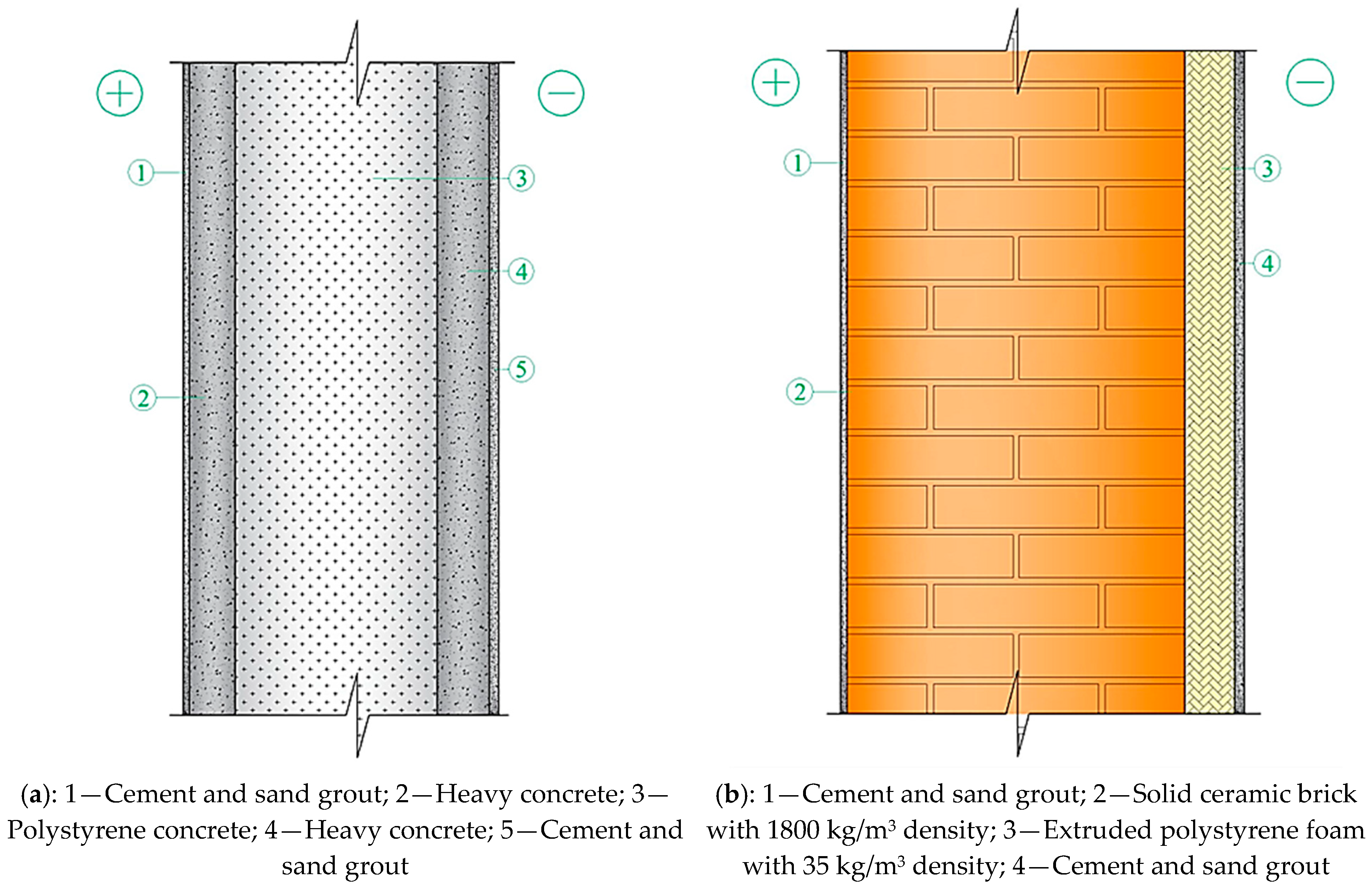
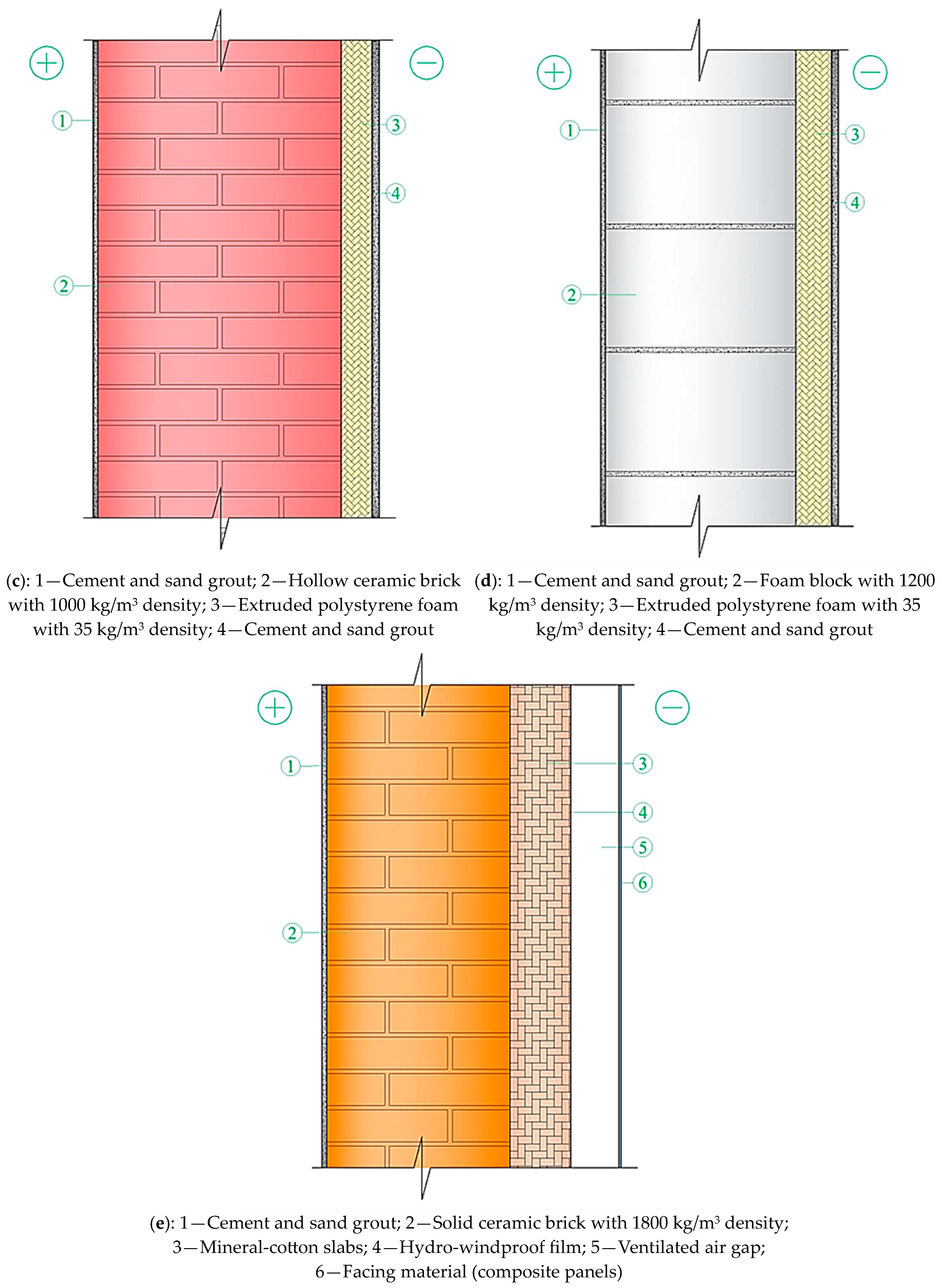
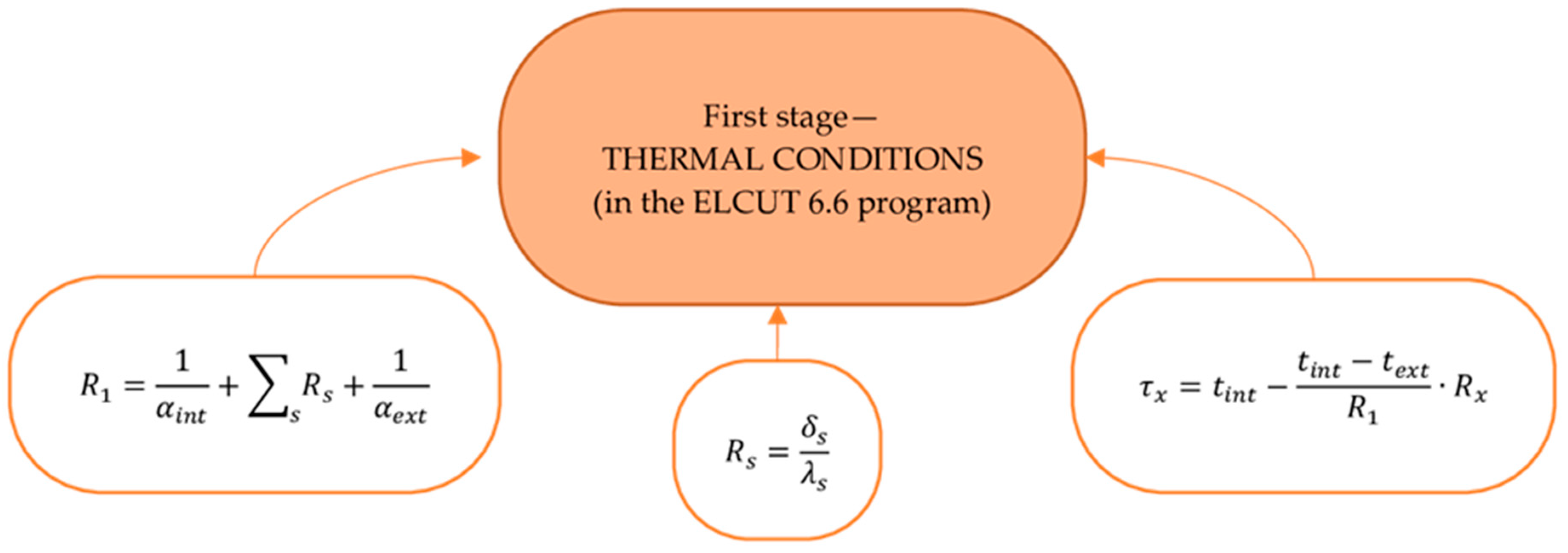
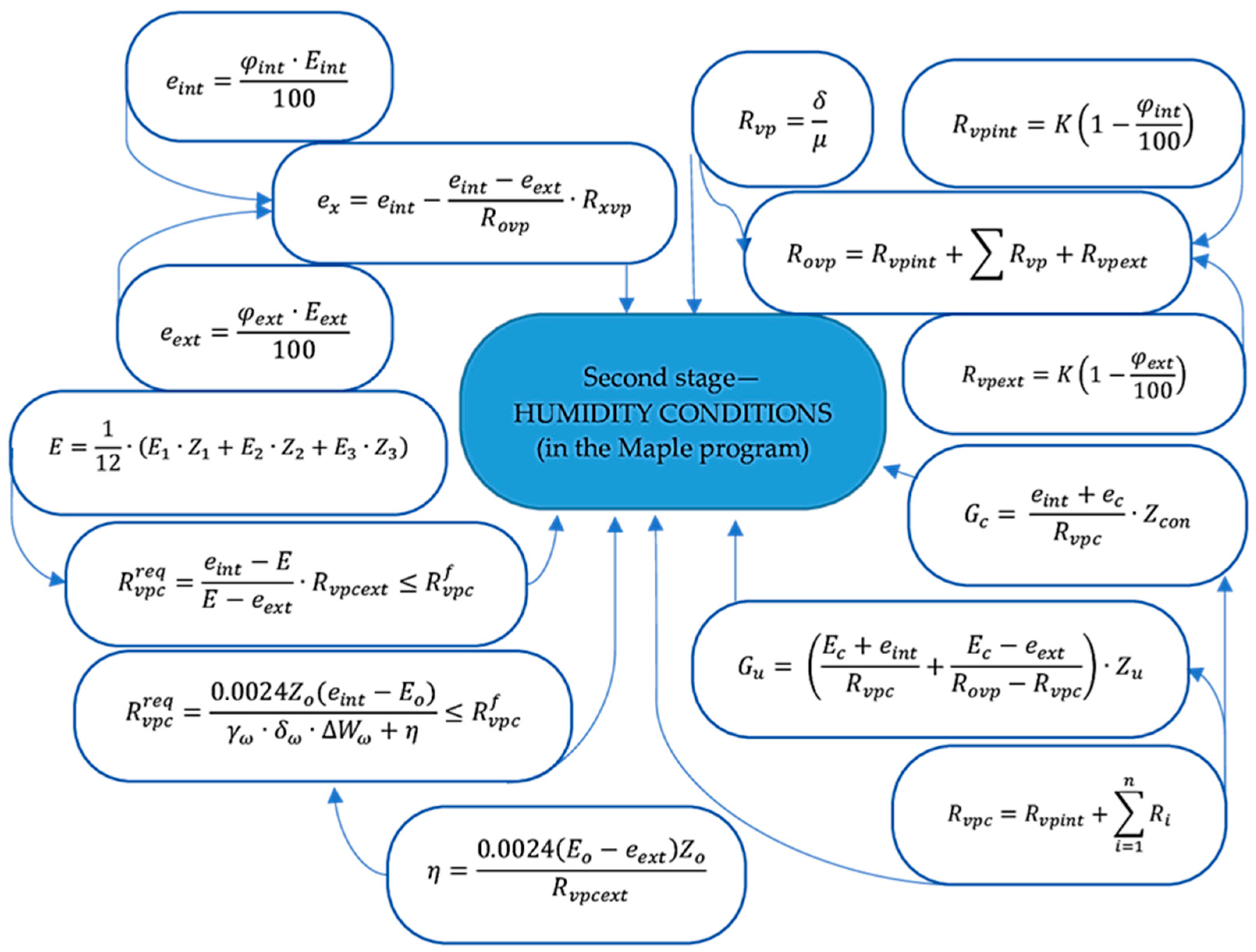

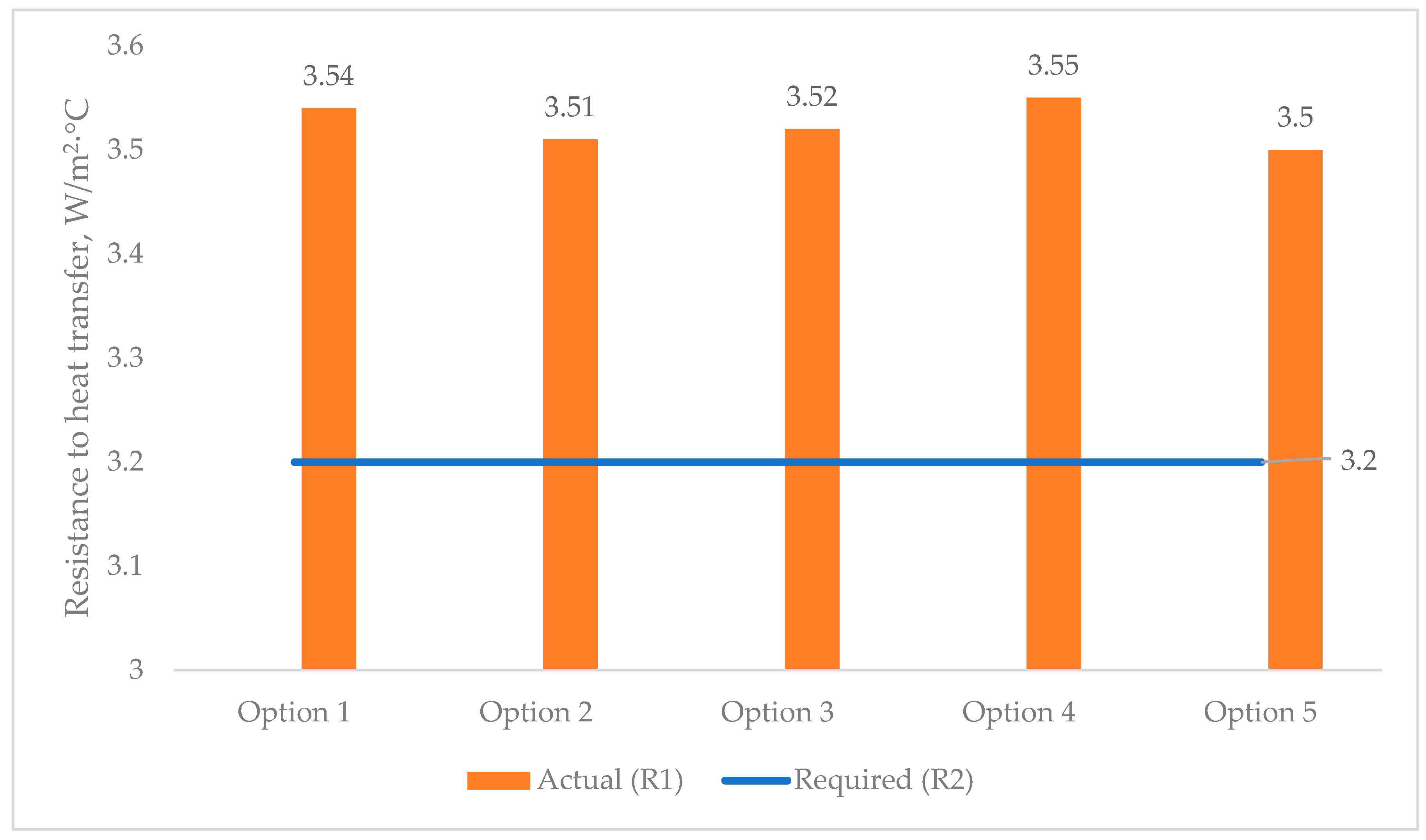
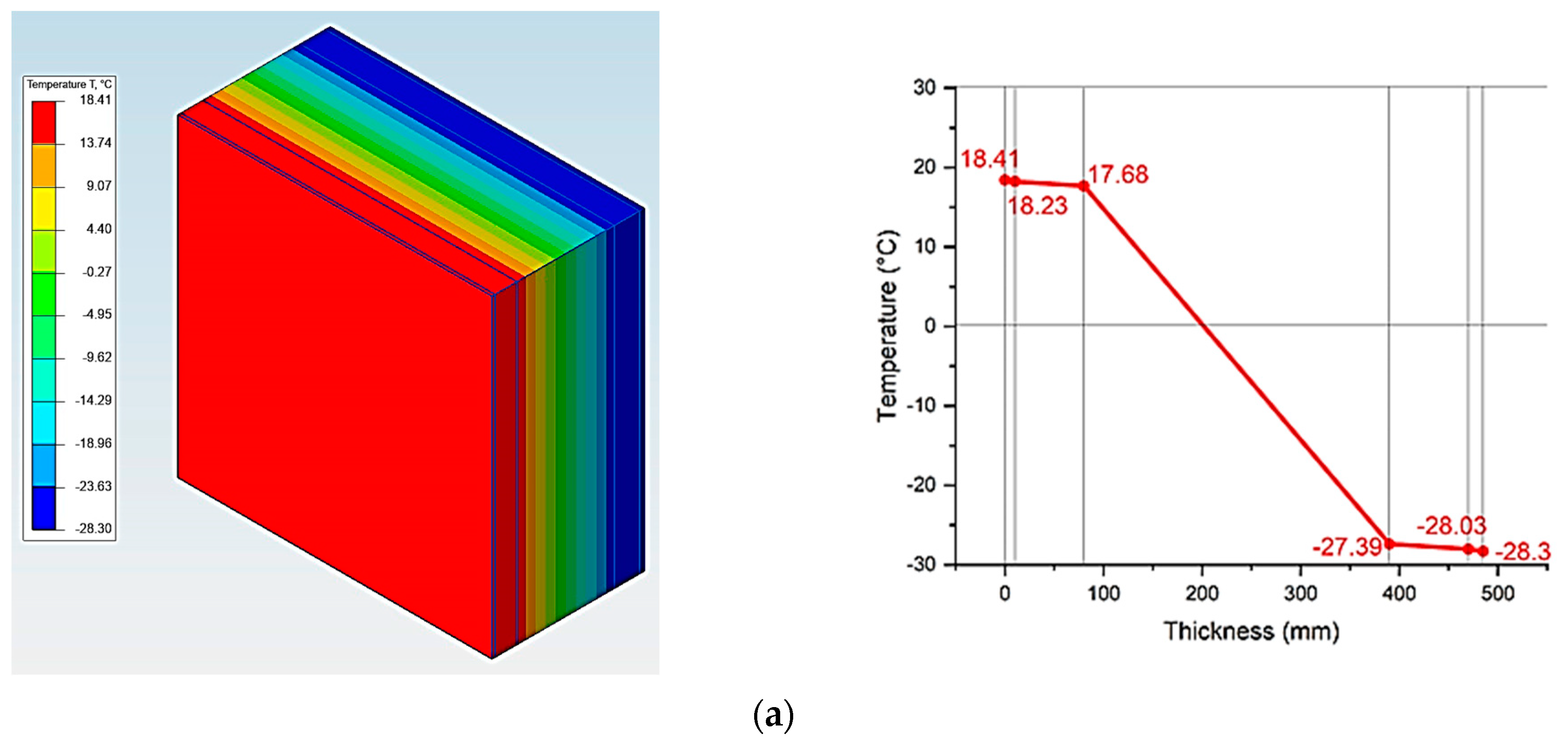

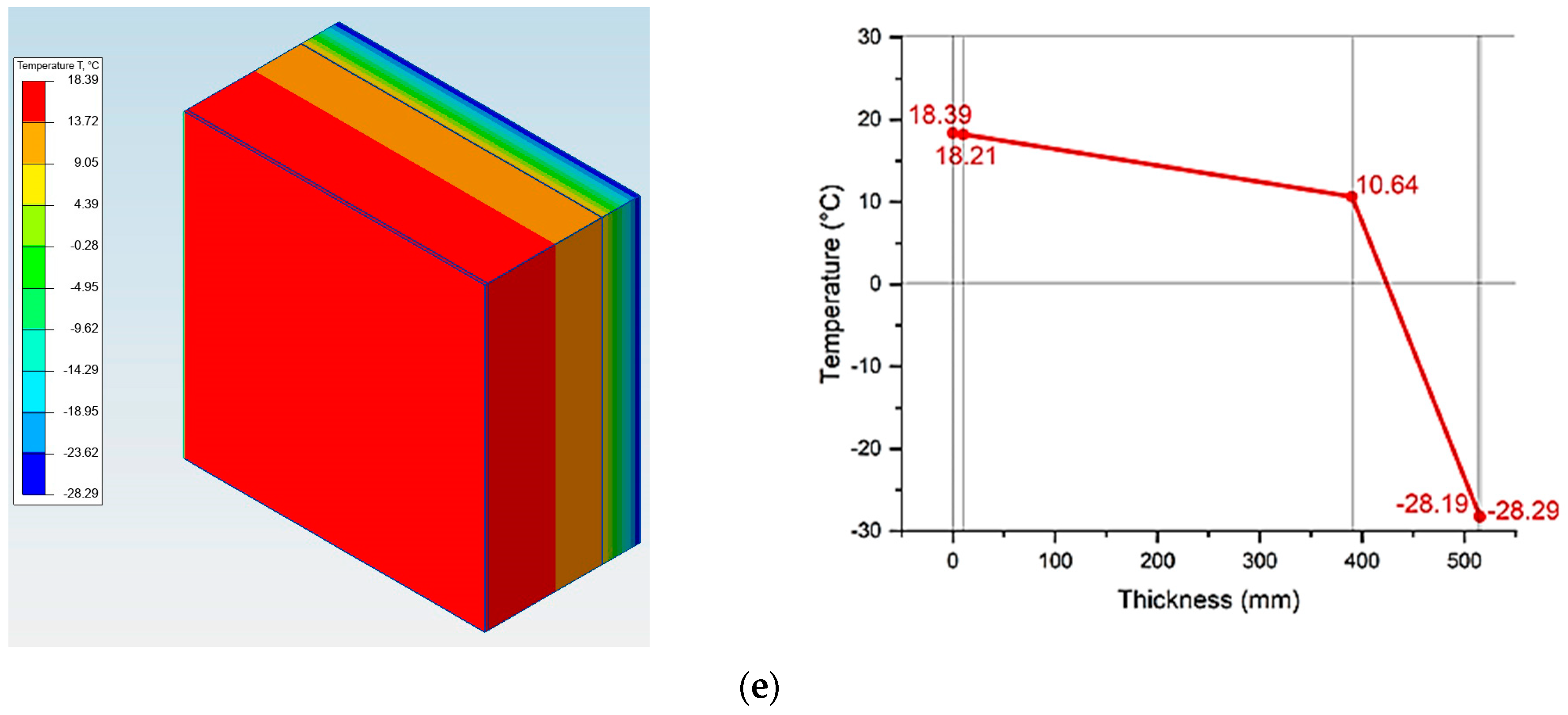
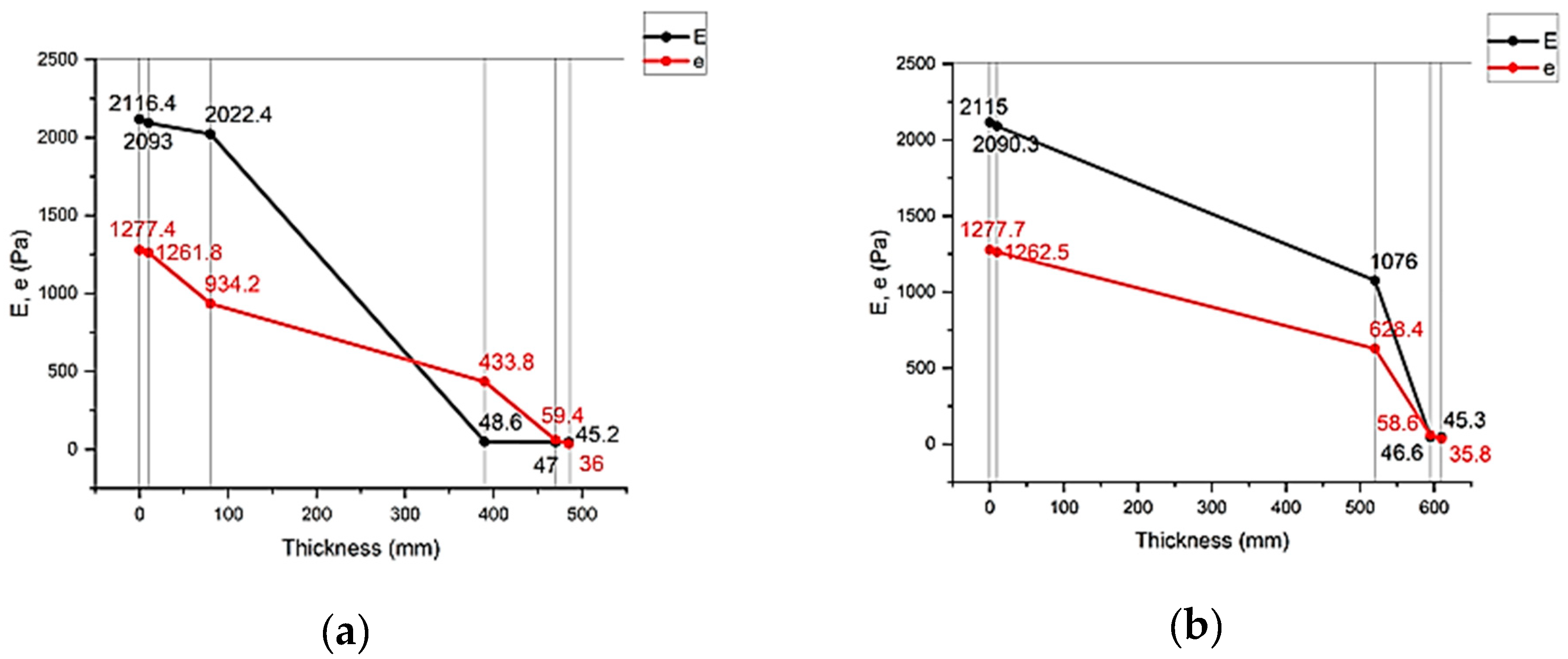
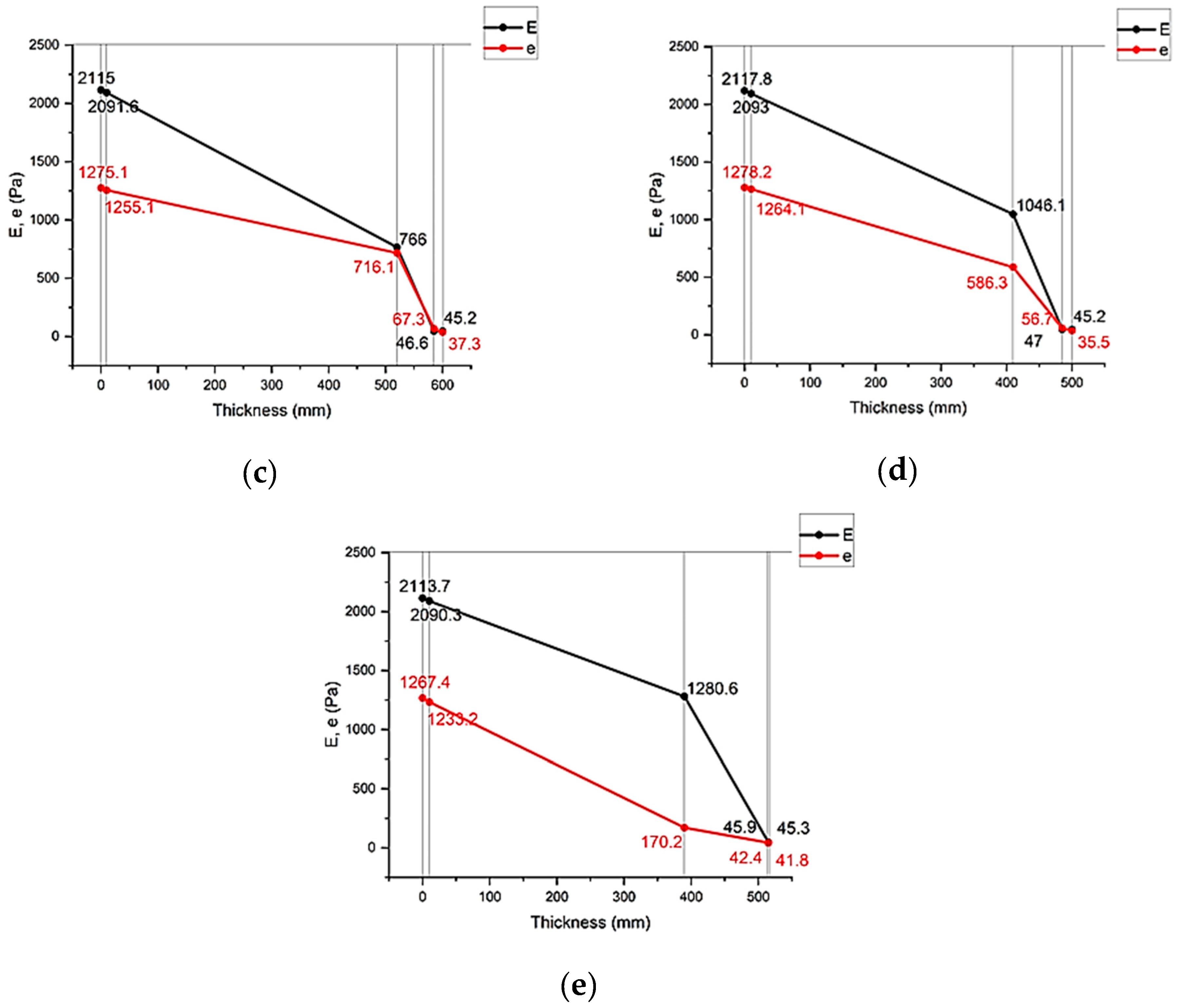

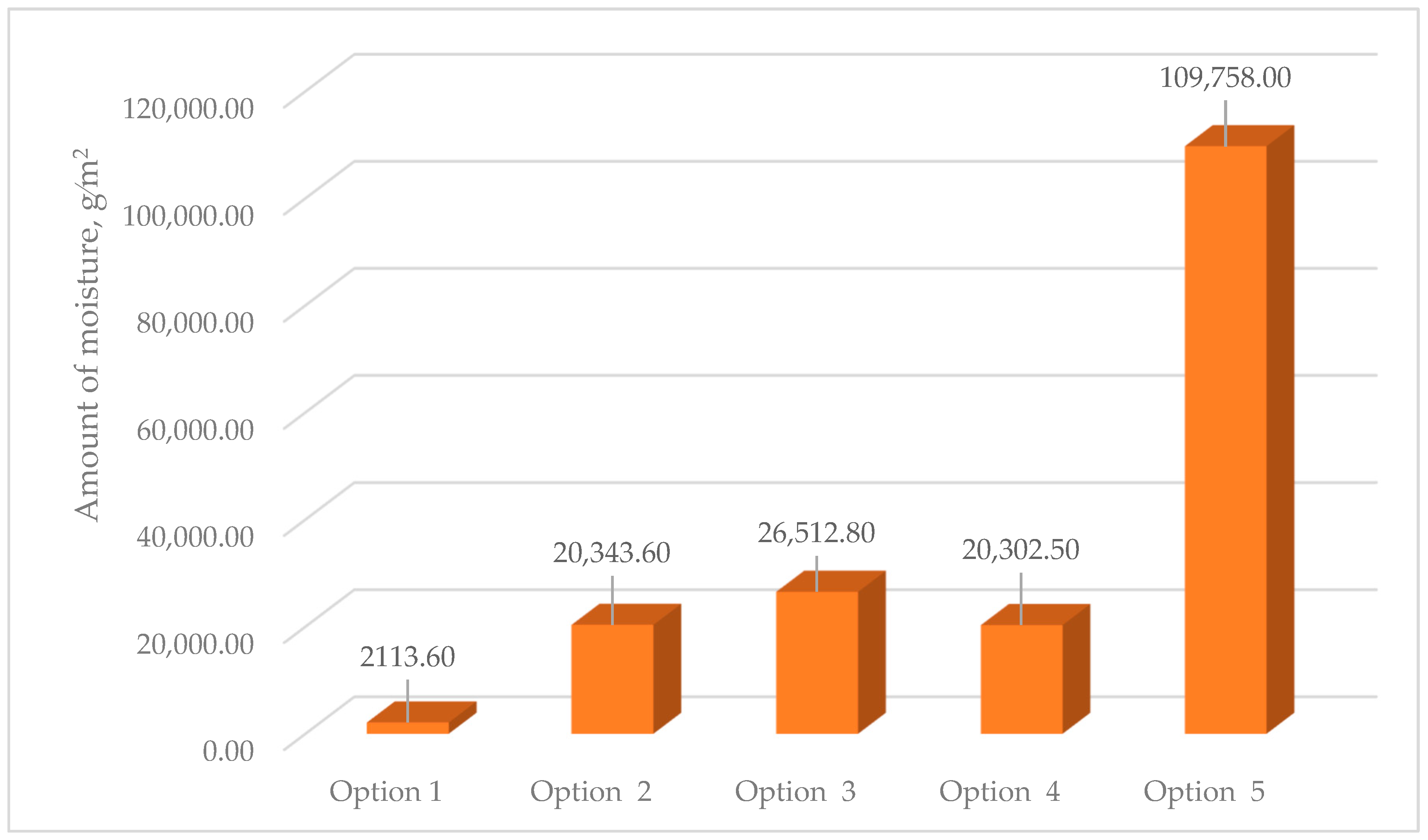
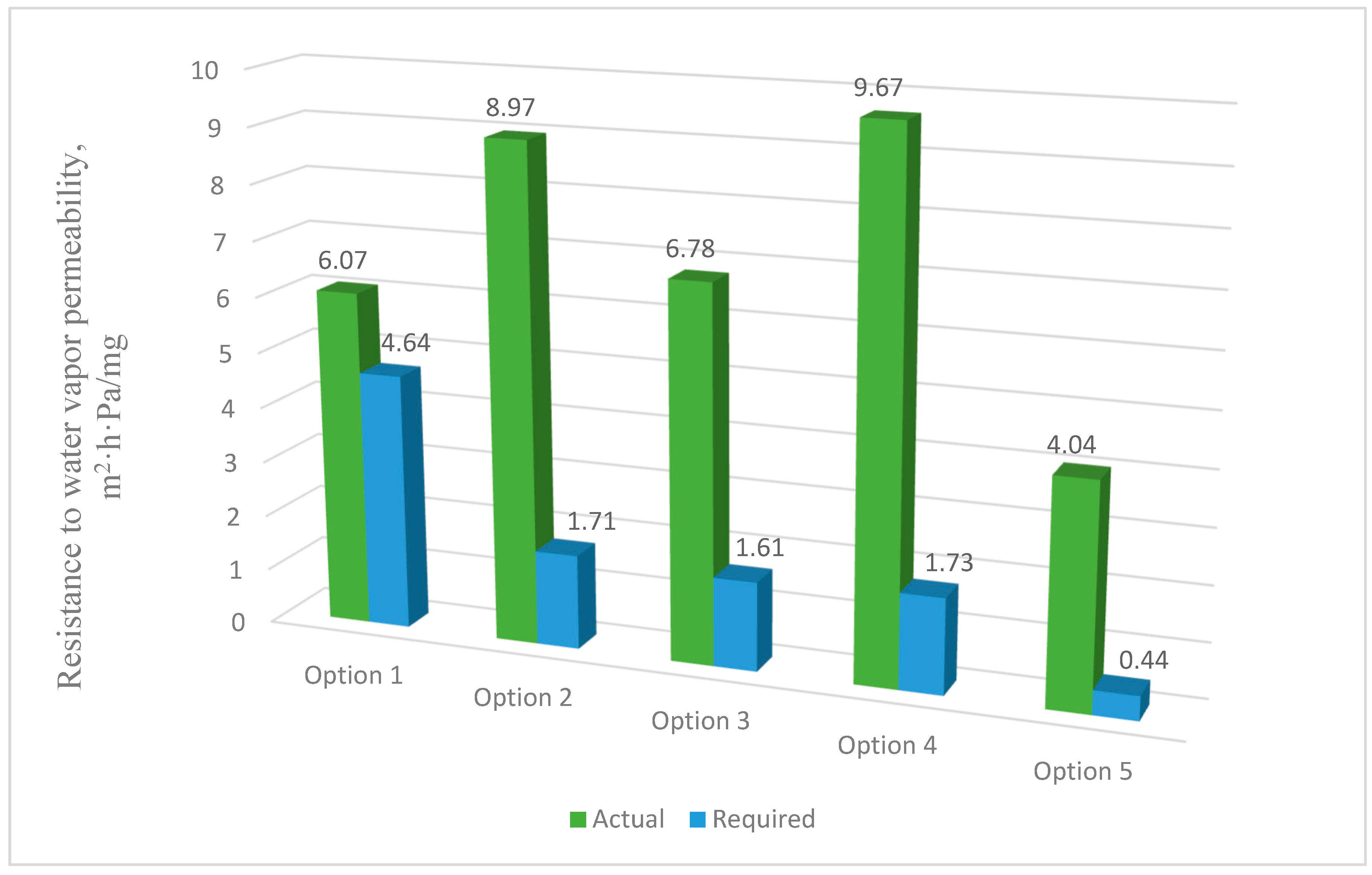
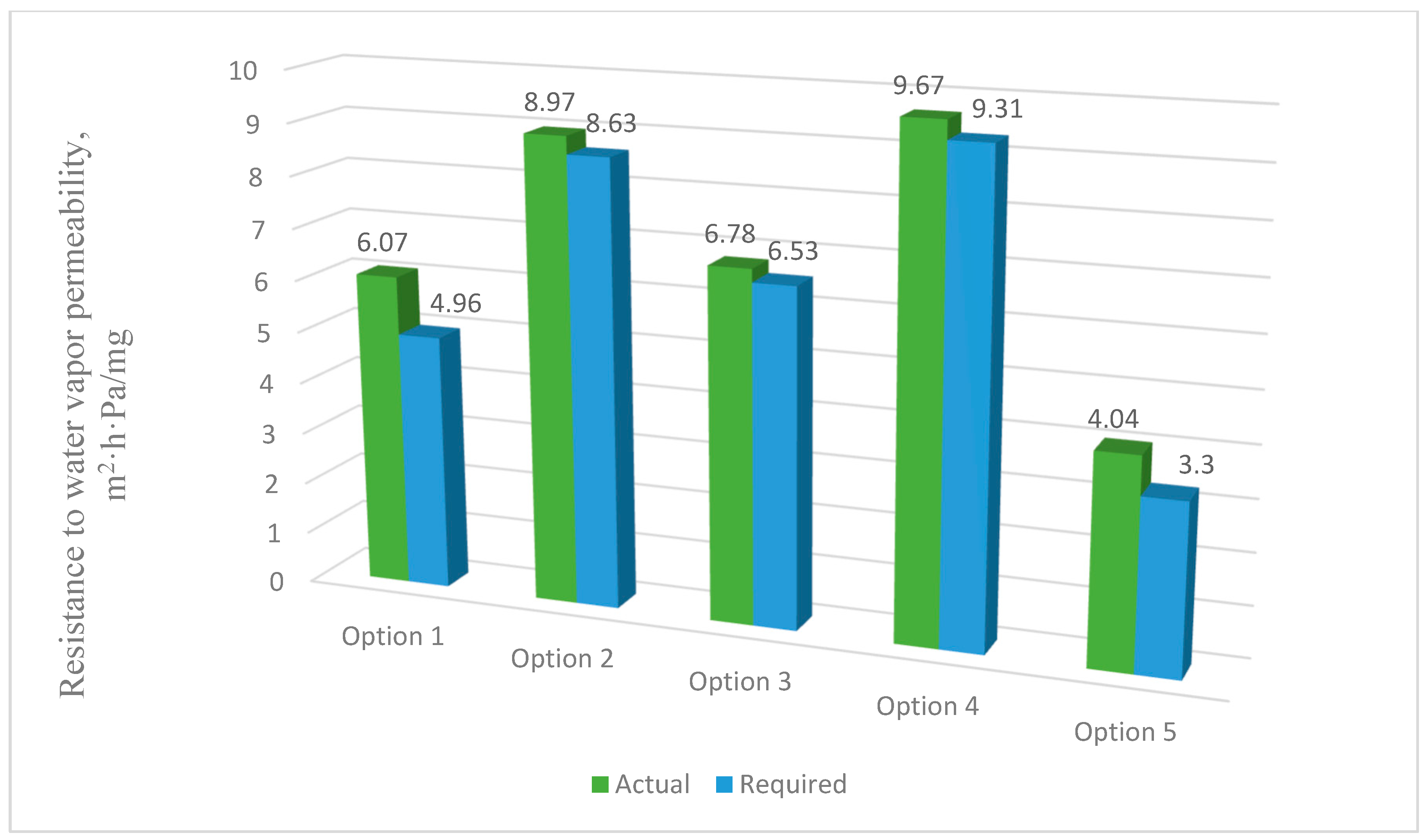

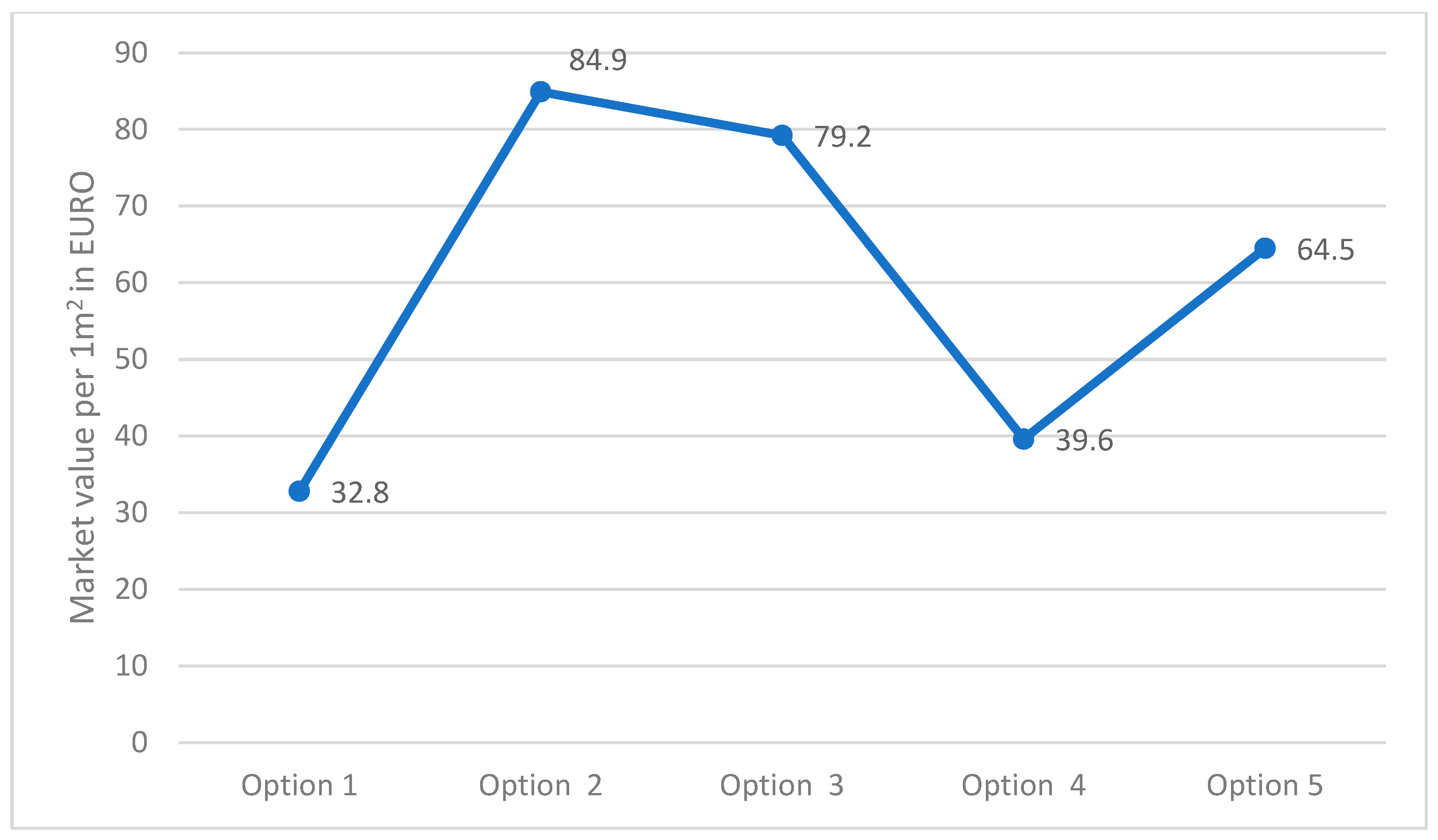
| № | Layer | Layer Thickness, mm | Thermal Conductivity for Operating Zone A, λ (W/(m·°C) | Heat Absorption, S (W/(m·°C) | Vapor Permeability, μ (mg/m·h·Pa) | Air Permeability Resistance, RU (m2·h·Pa/kg) |
|---|---|---|---|---|---|---|
| 1 | Cement and sand grout | 10 | 0.76 | 9.6 | 0.09 | 373 |
| 2 | Heavy concrete | 70 | 1.74 | 16.77 | 0.03 | 19,620 |
| 3 | Polystyrene concrete | 310 | 0.095 | 2.07 | 0.087 | 79 |
| 4 | Heavy concrete | 80 | 1.74 | 16.77 | 0.03 | 19,620 |
| 5 | Cement and sand grout | 15 | 0.76 | 9.6 | 0.09 | 373 |
| № | Layer | Layer Thickness, mm | Thermal Conductivity for Operating Zone A, λ (W/(m·°C) | Heat Absorption, S (W/(m·°C) | Vapor Permeability, μ (mg/m·h·Pa) | Air Permeability Resistance, RU (m2·h·Pa/kg) |
|---|---|---|---|---|---|---|
| 1 | Cement and sand grout | 10 | 0.76 | 9.6 | 0.09 | 373 |
| 2 | Solid ceramic brick with 1800 kg/m3 density | 210 | 0.7 | 9.2 | 0.11 | 18 |
| 3 | Extruded polystyrene foam with 35 kg/m3 density | 75 | 0.029 | 0.36 | 0.018 | 79 |
| 4 | Cement and sand grout | 15 | 0.76 | 9.6 | 0.09 | 373 |
| № | Layer | Layer Thickness, mm | Thermal Conductivity for Operating Zone A, λ (W/(m·°C) | Heat Absorption, S (W/(m·°C) | Vapor Permeability, μ (mg/m·h·Pa) | Air Permeability Resistance, RU (m2·h·Pa/kg) |
|---|---|---|---|---|---|---|
| 1 | Cement and sand grout | 10 | 0.76 | 9.6 | 0.09 | 373 |
| 2 | Hollow ceramic brick with 1000 kg/m3 density | 510 | 0.47 | 6.16 | 0.17 | 2 |
| 3 | Extruded polystyrene foam with 35 kg/m3 density | 65 | 0.029 | 0.36 | 0.018 | 79 |
| 4 | Cement and sand grout | 15 | 0.76 | 9.6 | 0.09 | 373 |
| № | Layer | Layer Thickness, mm | Thermal Conductivity for Operating Zone A, λ (W/(m·°C) | Heat Absorption, S (W/(m·°C) | Vapor Permeability, μ (mg/m·h·Pa) | Air Permeability Resistance, RU (m2·h·Pa/kg) |
|---|---|---|---|---|---|---|
| 1 | Cement and sand grout | 10 | 0.76 | 9.6 | 0.09 | 373 |
| 2 | Foam block with 1200 kg/m3 density | 400 | 0.52 | 8.17 | 0.075 | 196 |
| 3 | Extruded polystyrene foam with 35 kg/m3 density | 75 | 0.029 | 0.36 | 0.018 | 79 |
| 4 | Cement and sand grout | 15 | 0.76 | 9.6 | 0.09 | 373 |
| № | Layer | Layer Thickness, mm | Thermal Conductivity for Operating Zone A, λ (W/(m·°C) | Heat Absorption, S (W/(m·°C) | Vapor Permeability, μ (mg/m·h·Pa) | Air Permeability Resistance, RU (m2·h·Pa/kg) |
|---|---|---|---|---|---|---|
| 1 | Cement and sand grout | 10 | 0.76 | 9.6 | 0.09 | 373 |
| 2 | Solid ceramic brick with 1800 kg/m3 density | 380 | 0.7 | 9.2 | 0.11 | 18 |
| 3 | Mineral-cotton slabs | 125 | 0.045 | 0.74 | 0.3 | 1.5 |
| 4 | Hydro-windproof film | - | 0.76 | - | 0.09 | 150 |
| 5 | Ventilated air gap | 100 | - | - | - | - |
| 6 | Facing material (composite panels) | 5 | - | - | - | - |
| № | Indicators | Values |
|---|---|---|
| 1 | Development region | Karaganda, Republic of Kazakhstan |
| 2 | Humidity conditions of the room | Normal |
| 3 | Humidity zone | Dry |
| 4 | Operating conditions of cladding structures | A |
| 5 | Absolute max. temperature | 40.2 °C. |
| 6 | Absolute min. temperature | –42.9 °C |
| 7 | Average annual temperature | 3.7 °C |
| 8 | Average temperature of the coldest 5-day period with a probability of 0.92 | –28.9 °C |
| 9 | Average max. temperature of the warmest month (July) | 26.8 °C. |
| 10 | Max. amplitude of daily fluctuations in outdoor air temperature in July | 12.9 °C |
| 11 | Average monthly outdoor air temperature for July | 20.4 °C |
| 12 | Average monthly temperature of the coldest month (January) | –13.6 °C |
| 13 | Average relative humidity of the coldest month (January) | 79% |
| 14 | Average annual humidity | 65% |
| 15 | Maximum of average speeds by rhumbs in January | 6.6 м/c |
| 16 | Duration of the heating season | 207 days |
| 17 | Internal temperature in winter | 20 °C |
| 18 | Internal humidity | 55% |
| 19 | Required design resistance according to the degree-day of the heating period | 3.2 W/m2 °C |
| № | Schemes | Required Air Permeability Resistance Depending on the Building Height | Actual Air Permeability Resistance | Fulfillment of the Condition | |
|---|---|---|---|---|---|
| H = 3 m | H = 15 m | ||||
| 1 | Option—1 | 43.79 | 75.07 | 30,131.91 | Done |
| 2 | Option—2 | 43.79 | 75.07 | 719.9 | Done |
| 3 | Option—3 | 43.79 | 75.07 | 703.9 | Done |
| 4 | Option—4 | 43.79 | 75.07 | 822.9 | Done |
| 5 | Option—5 | 43.79 | 75.07 | 419.4 | Done |
| Condition | Schemes | |||||
|---|---|---|---|---|---|---|
| Option 1 | Option 2 | Option 3 | Option 4 | Option 5 | ||
| Without taking into account air filtration, °C according to Figure 3 | 18.41 | 18.40 | 18.40 | 18.42 | 18.39 | |
| 18.23 | 18.21 | 18.22 | 18.23 | 18.21 | ||
| 17.68 | 8.05 | 3.14 | 7.63 | 10.62 | ||
| −27.39 | −28.02 | −28.02 | −28.03 | −28.19 | ||
| −28.03 | - | - | - | - | ||
| −28.30 | −28.29 | −28.30 | −28.30 | −28.29 | ||
| Taking into account air filtration, °C | 18.41 | 18.25 | 18.25 | 18.29 | 18.14 | |
| 18.23 | 18.05 | 18.05 | 18.09 | 17.93 | ||
| 17.67 | 7.21 | 2.09 | 6.87 | 9.40 | ||
| −27.40 | −28.10 | −28.10 | −28.10 | −28.29 | ||
| −28.03 | - | - | - | - | ||
| −28.30 | −28.35 | −28.35 | −28.35 | −28.38 | ||
| Difference | % | Up to 0.5 | 10.4 | 33.4 | 9.96 | 11.5 |
Disclaimer/Publisher’s Note: The statements, opinions and data contained in all publications are solely those of the individual author(s) and contributor(s) and not of MDPI and/or the editor(s). MDPI and/or the editor(s) disclaim responsibility for any injury to people or property resulting from any ideas, methods, instructions or products referred to in the content. |
© 2024 by the authors. Licensee MDPI, Basel, Switzerland. This article is an open access article distributed under the terms and conditions of the Creative Commons Attribution (CC BY) license (https://creativecommons.org/licenses/by/4.0/).
Share and Cite
Rakhimova, G.; Zhangabay, N.; Samoilova, T.; Rakhimov, M.; Kropachev, P.; Stanevich, V.; Karacasu, M.; Ibraimova, U. Computational Research of the Efficiency of Using a Three-Layer Panel Made of Highly Porous Polystyrene Concrete. Materials 2024, 17, 4133. https://doi.org/10.3390/ma17164133
Rakhimova G, Zhangabay N, Samoilova T, Rakhimov M, Kropachev P, Stanevich V, Karacasu M, Ibraimova U. Computational Research of the Efficiency of Using a Three-Layer Panel Made of Highly Porous Polystyrene Concrete. Materials. 2024; 17(16):4133. https://doi.org/10.3390/ma17164133
Chicago/Turabian StyleRakhimova, Galiya, Nurlan Zhangabay, Tatyana Samoilova, Murat Rakhimov, Pyotr Kropachev, Victor Stanevich, Murat Karacasu, and Ulzhan Ibraimova. 2024. "Computational Research of the Efficiency of Using a Three-Layer Panel Made of Highly Porous Polystyrene Concrete" Materials 17, no. 16: 4133. https://doi.org/10.3390/ma17164133





